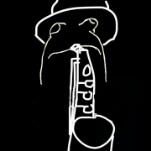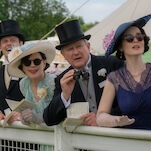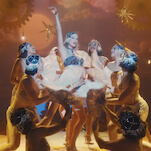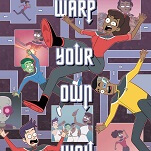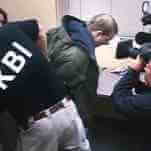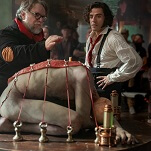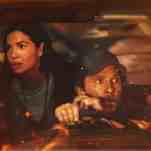The first two "Treasures From American Film Archives" volumes cut a wide swath through American cinema, presenting a grand sketch of the medium's varied approaches: film-as-art, film-as-entertainment, film-as-journalism, and so on. Treasures III: Social Issues In American Film 1900-1934 narrows its focus to early cinema's take on social progress and social ills. Over four discs, Treasures III offers vintage shorts, newsreels, and feature films covering urban life, women's rights, labor strife, and immigration. With a few noteworthy exceptions—like Cecil B. DeMille's jaw-droppingly expressionistic anti-atheism epic The Godless Girl—the films on this Treasures are noteworthy for their their history, not their artistry.
Consider "The Black Hand," a 1906 kidnapping story, ripped from the day's headlines. As melodrama, "The Black Hand" is overheated, but it's redeemed by an extended stretch of New York City location footage, with actual horse-drawn carriages and natty multiethnic pedestrians sidestepping piles of snow. Film has been around for more than a century, and yet there's still something amazing about watching real people from four generations ago. Equally amazing are Treasures III's string of anti-suffragette cartoons and comic shorts, the D.W. Griffith-directed Native American rights plea "Ramona," the 1913 watch-out-for-streetcars safety film "The Cost Of Carelessness," and many more. Treasures III is like a moving textbook, preserving aspects of our national character for people to study for centuries to come.
For a more straightforward take on early cinema, the DVD set Discovering Cinema offers two French documentaries: "Learning To Talk," about the history of sound film, and "Movies Dream In Color," about the trial and error involved in bringing color to the screen. Both are a little dry in presentation, but loaded with amazing clips from innovative films, like some early European "musical" shorts that superimposed a conductor's baton—or in one case an actual conductor—to cue the orchestra in the theater, and another early film that tried to create the illusion of color by staining alternating frames with different dyes. As documentaries, the two parts of Discovering Cinema are merely functional, but as a record of hand-crafted cinematic ingenuity, they're oddly touching.
Key features: Vital contextual commentary tracks on Treasures, and a store of early "test" films on Discovering Cinema.












